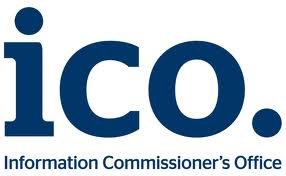Planning and Permitted Development Rights
Installing certain renewable energy technologies, such as Solar Thermal, Solar PV and Biomass boilers, has now been made a lot simpler thanks to Permitted Development Rights introduced on 6th April 2008 in England and 12th March 2009 in Scotland.
Permitted Development Rights
In England and Scotland, changes to permitted development rights for renewable technologies introduced on 6th April 2008 and 12th March 2009 respectively, have lifted the requirements for planning permission for most domestic microgeneration technologies.
Wales
New planning rules that make it easier for people to install microgeneration equipment in their homes came into effect from the beginning of September 2009. Permitted Development Rights are extended to allow a greater range of domestic microgeneration equipment to be installed without requiring planning permission, subject to specific criteria.
Scotland and Northern Ireland
Permitted Development and planning policy in general is a devolved responsibility. The Scottish Government and Northern Ireland Government are currently all considering changes to their legislation on permitted developments, to facilitate installations of microgeneration technologies.
Until then, householders in Scotland and Northern Ireland must consult with their local authority regarding planning permission.
England
The permitted development rights for low carbon and renewable technologies were changed on the 6th April 2008, lifting the requirements for planning permission for the technologies detailed below.
Solar PV and Solar Thermal (roof mounted):
Permitted unless;
- panels, when installed, protrude more than 200mm
- it would result in the highest part of the solar PV or solar thermal equipment being higher than the highest part of the roof (excluding any chimney)
- they would be placed on a wall forming the principal or side elevation of the dwellinghouse and would be visible from a highway in buildings in Conservation Areas and World Heritage Sites
Solar PV and Solar Thermal (stand alone):
Permitted unless:
- more than 4 metres in height
- installed less than 5 metres away from any boundary
- above a maximum area of array of 9m2
- situated within any part of the curtilage of the dwelling house or would be visible from the highway in conservations areas and World Heritage Sites
Biomass Boilers and Stoves, and CHP:
Permitted unless:
- flue exceeds 1m above the roof height
- installed on the principal elevation and visible from a road in buildings in conservation areas and World Heritage Sites.
Permitted.
Water Source Heat Pumps:
Permitted.
Due to legal technicalities the current statutory instrument (SI) does not cover micro wind. Once these issues have been resolved, it is expected that roof mounted and free standing micro wind turbines will be permitted at detached properties that are not in conservation areas. Further legislation is expected later this year.
Until then, you must consult with your local authority regarding planning permission.
Air Source Heat Pumps (ASHP):
ASHP is in a similar situation to micro wind. Once the legal technicalities have been resolved, it is expected that air source heat pumps will be permitted developments. Again, further legislation is expected shortly.
Until then, you must consult with your local authority regarding planning permission.
(Note that the permitted development rights are not extended to Listed Buildings which are covered separately by other planning regulations.)
For specific questions regarding planning in your local area you must ask your local planning authority. Click here to find your local planning authority.
For any further questions on your MCS Accreditation please call our MCS advice team on 0800 882 4308.





















